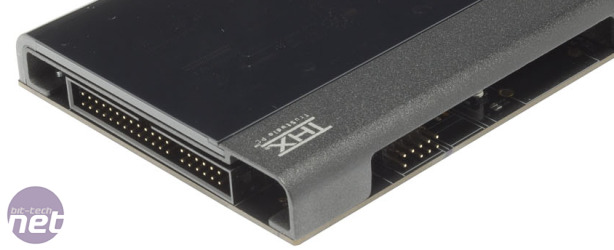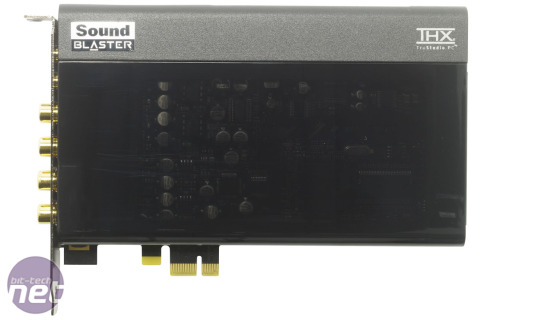
More Specs and Features
Creative has taken considerable time and care to select good-quality components for theSound Blaster X-Fi Tianium HD. We’ve seen similar specifications from both Asus and Auzentech, but this is Creative’s first attempt in recent years to focus on audio fidelity for music rather than gaming. The card’s spec adds up to provide a signal-to-noise ratio (SNR) of 122dB, with a maximum output sample rate of 192KHz at a 24-bit resolution.Creative also places almost as much emphasis on its THX-certified driver software as its hardware. The software bundle includes TruStudio PC Surround, for virtual surround sound, and PC Crystalizer, which attempts to fill the gaps left by audio compression and PC speakers. The latter is also designed to fill in the missing low-frequency tones that result from using low-quality, treble-heavy speakers or headphones, and we wonder who would spend £168 on a sound card only to plug it into cheap speakers. Meanwhile, there’s hardware support for EAX 5.0 and OpenAL, as well as DTS Connect and Dolby Digital Live for surround-sound upmixing.
The card also includes an ASIO (Audio Stream Input/Output) driver. ASIO drivers are usually used by professional audio creation and editing suites to reduce latency. They’re also supported by audio player software, such as Foobar2000, although the advantages of using ASIO for playback are debatable.
On to to the big question - how does it sound? At this point, it's worth noting that sound quality is largely subjective matter, even if you have the card connected to the kind of audio equipment that will highlight the differences in audio quality between the Titanium HD and a £30 Asus Xonar DX.
The card’s output through our Behringer Truth studio monitors at flat EQ settings had presence, with a solid bass and bright top end. However, we’d prefer a more defined mid-range and slightly less emphasis on bass notes. The replaceable op-amps mean that it will be easier to tweak the sound card’s audio quality, but we preferred the out-of-the-box sound quality of Asus’ Xonar Essence STX. We’ve also used audio production hardware from M-Audio and Hercules that sounds better and doesn’t cost much more.
Conclusion
There are plenty of reasons not to use your motherboard’s integrated audio chipset, from mediocre sound quality to poor-quality drivers that can cause software crashes. However, unless your PC is the main focus of your home audio system, and plays lossless audio files through high-end speakers or headphones, this isn’t the sound card for you. For music production, we prefer our Hercules DJ RMX console, while the Asus Xonar Essence STX is clearer for audio playback.Even then, gamers will be better off with Asus’ Xonar DX, which has outputs for 7.1 analogue surround sound and great all-round audio quality. It also has driver support for environmental audio in games and virtual surround sound in movies.
- Sound Quality
- x
- x
- x
- x
- x
- x
- x
- x
- -
- -
- 8/10
- Features
- x
- x
- x
- x
- x
- -
- -
- -
- -
- -
- 5/10
- Value
- x
- x
- x
- x
- -
- -
- -
- -
- -
- -
- 4/10
- Overall
- x
- x
- x
- x
- x
- x
- -
- -
- -
- -
- 6/10

MSI MPG Velox 100R Chassis Review
October 14 2021 | 15:04










Want to comment? Please log in.